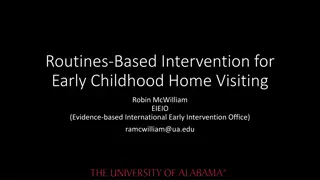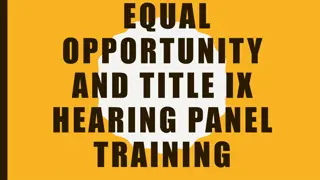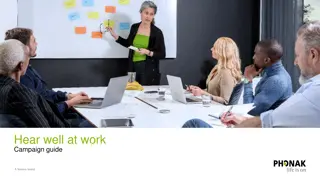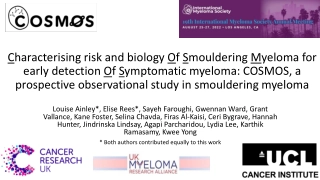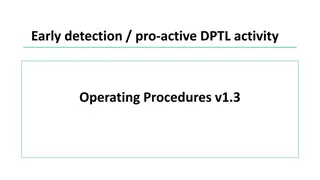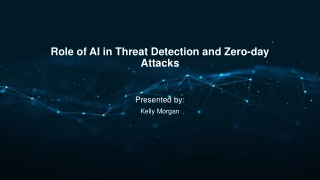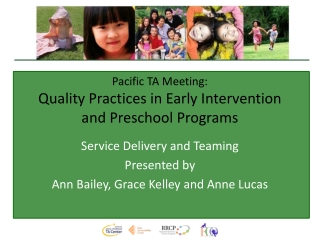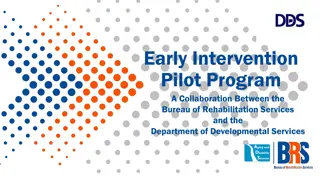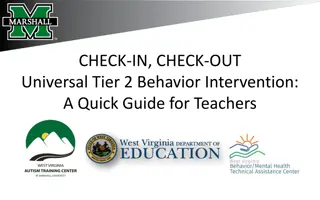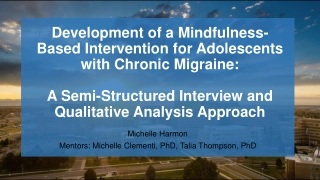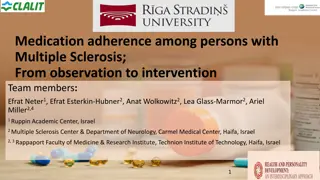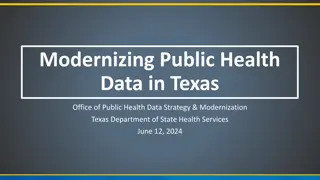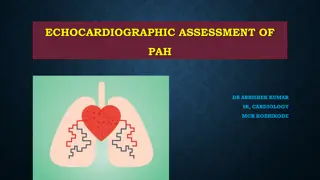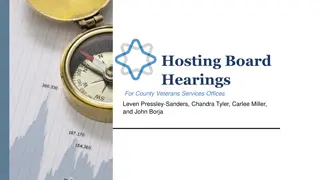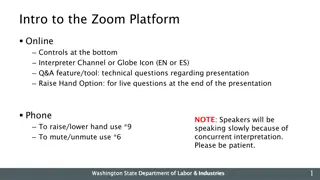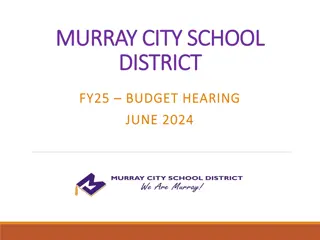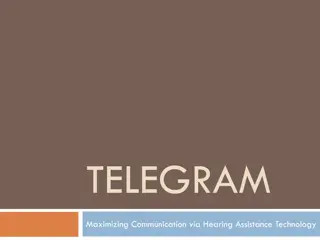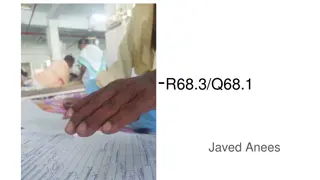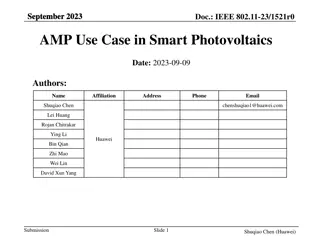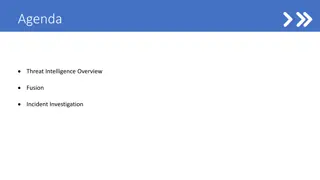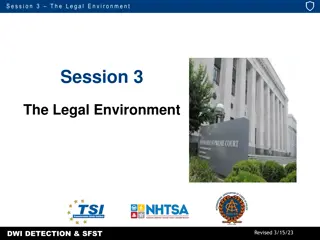Early Hearing Detection and Intervention (EHDI)
Explore case studies showcasing the experiences of families in the EHDI system, highlighting the need for early intervention for children who are deaf or hard of hearing. Supported by HRSA.
Download Presentation
Please find below an Image/Link to download the presentation.
The content on the website is provided AS IS for your information and personal use only. It may not be sold, licensed, or shared on other websites without obtaining consent from the author. Download presentation by click this link. If you encounter any issues during the download, it is possible that the publisher has removed the file from their server.
Presentation Transcript
Early Hearing Detection and Intervention (EHDI): Case Studies <ENTER YOUR NAME/CREDENTIALS HERE> This project is supported by the Health Resources and Services Administration (HRSA) of the U.S. Department of Health and Human Services (HHS) as part of an award totaling $154,000 with 0% financed with nongovernmental sources. The contents are those of the author(s) and do not necessarily represent the official views of, nor an endorsement, by HRSA, HHS or the U.S. Government.
The American Academy of Pediatrics (AAP) Early Hearing Detection and Intervention (EHDI) program strives to use language that is clear, concise, anti-ableist, anti-audist, and guided by those with lived experiences throughout all program resources and initiatives. Words Matter: A Note About Language Used in This Presentation While every effort will be made toward inclusive language, the AAP EHDI program aligns with and acknowledges the AAP Words Matter Guidance which states there will be variations in how individuals self-identify and prefer to be referenced. Individuals within groups may have different preferences, and preferences may also change over time. Inclusive, anti-biased language honors the rights of groups and individuals to define their own identities. Therefore, the AAP EHDI program continues to evaluate the language it uses in training, education, and resource development. The program endeavors to use language that is inclusive of the EHDI community.
Meet the Families Newborn Screening & Referral Presentation Overview Early Intervention Discussion Questions Resources
The following case studies do not attempt to encompass the entirety of the family experience within the EHDI system. Rather, the two families and cases highlighted in this presentation provide only a snapshot of the types of families and family experiences in the EHDI system. The makeup of the families and situations presented in the case studies were pulled from various examples and perspectives of the expert workgroup who developed this resource and were not modeled after any specific families or situations. A Note on this Presentation The purpose of this presentation is to encourage conversation on how pediatricians can best support families navigating the EHDI system. Therefore, the AAP EHDI program strongly encourages inclusion of family partners, the state EHDI coordinator, and others within the state EHDI system to participate in the implementation of this presentation. As you move through this presentation, consider, as part of the discussion questions, asking participants, Are there any other important issues to address at this time? This may open a space for participants to share encounters from their personal experiences related to the material being presented.
State EHDI Program o The state program creates, operates, and continuously improves the system of services for children who are deaf or hard of hearing (D/HH) in their state. o Browse the National Technical Resource Centerto find contact information for your state EHDI coordinatorand state profile. Contact Your State EHDI Partners Family Support o Families of children who are D/HH can find immense benefit from connecting with, and learning from, other families with children who are D/HH. o Hands & Voices Family Leadership in Language & Learning (FL3) Centerhas family-centered resources and a listingof state/territory family-based organizations available for technical assistance and to serve as a resource for families, state EHDI program, and pediatricians.
D/HH Adults, Mentors, and Coaches o Adults who are D/HH can offer a unique perspective and support to families of children who are D/HH. o Hands & Voices provides training resourcesfor adults who are D/HH that would like to serve as mentors and coaches. o The National Technical Resource Center provides a list of adult mentors and coachesby state. Contact Your State EHDI Partners (cont) AAP Chapter Champion o Pediatricians are a key part of the system of services for children who are D/HH, not only for provision of care but also to connect families with resources in their state. o The Chapter Championsare a group of volunteer AAP members providing education and trainings on EHDI within their state. Chapter champions are a great resource for pediatricians, the state EHDI program, and families of children who are D/HH. o Contact the AAP EHDI programto be connected to the Chapter Champion in your state and/or for information on how to become a Chapter Champion for your state.
Family A is comprised of a single parent household who is hearing. English is not the parent s first language. The family lives in a rural area and has 2 additional children. The family uses public insurance for their healthcare needs. Their new baby was born at the hospital and does not pass their hearing screen. The baby is referred to pediatric audiology for diagnostic testing although an appointment is not made prior to discharge from the hospital given limited availability of pediatric audiologists in the community. Meet Family A
Family B is comprised of a two-parent household. Both parents are hearing. The family has no additional children and lives near a major urban area with access to a large academic medical center. The family uses private insurance for their healthcare needs. Their new baby is born in a hospital and does not pass their hearing screen in one ear. The baby is referred to a pediatric audiologist before being discharged from the hospital. Meet Family B
Family A faces many barriers to finding a pediatric audiologist available to provide diagnostic testing for the baby. Very few audiologists are available in the family s state and of those available, most do not accept public insurance. The parent connected with friends in the community who also have children with special health care needs to learn more about how to make specialty appointments. The parent is very determined for Baby A to receive diagnostic testing and though it is a major burden for the parent, they can schedule an appointment. Newborn Screening and Referral Family A Upon scheduling the appointment, the parent learns interpreter services are not available for the appointment. The parent is forced to bring along a friend to try to interpret. Interpreting medical terminology for those who are not formally trained as medical interpreters is extremely challenging and can often result in misinterpretation due to this situation, the parent does not receive completely clear and accurate information from the audiologist and other staff in the diagnostic testing practice. Baby A is seen by the audiologist at 6 months of age. The diagnostic testing results indicate the baby has profound deafness.
What could the baby s pediatrician have done to reduce barriers for the family and hasten obtaining diagnostic testing? How can the medical home support families in navigating the EHDI system for whom English is not their first language? How can the medical home support audiology practices to reduce barriers in provision of language access services for families? What are some of the family's strengths and protective factors? How can these play a role in supporting the family's journey through the EHDI system? What other referrals need to be placed at this time? Discussion Questions
Family B is reluctant to follow up with audiology for diagnostic testing as Baby B showed hearing loss in one ear and the family does not believe it is a priority to have further diagnostic testing. Family B meets with their pediatrician for the 1-month well child visit and discusses the importance of follow up diagnostic testing. Baby B s parents agree to meet with the pediatric audiologist and have an appointment a week after meeting with the pediatrician. Early Newborn Screening and Referral Family B Through diagnostic testing, Baby B is diagnosed with unilateral hearing loss. The pediatrician receives the results within a few days and immediately refers Baby B for early intervention.
How can pediatricians support families who may not recognize the urgency to receive diagnostic testing and diagnosis for their child s hearing? What strategies can the pediatrician use to implement a strength-based approach to their well-child visit with the family? What strategies can the pediatrician use to implement a strength-based approach to this family both before and after the diagnostic testing has been done? Discussion Questions
Due to a lack of communication between the audiologist and the pediatrician, Baby A is delayed in its referral and entry into early intervention. Baby A s diagnostic results were not sent to their pediatrician in a timelyfashion. Once the pediatrician received the results, there was a delay due to challenges within the pediatric office to automatically review the results. Early Intervention Family A After the pediatrician reviewed the results, there was miscommunication between the pediatrician and audiologist on who would make the referral to early intervention. Baby A is not enrolled into early intervention until 10 months of age. The parent feels anxious in ensuring their child is exposed to language and does not want their child to fall behind. The parent makes an appointment with their pediatrician to discuss opportunities for communication and language. The parent is very open and interested in learning about all the options available for their child.
What could the pediatrician have done to better coordinate services after the diagnostic testing was complete? What are the opportunities for shared-decision making between the pediatrician and the family? How can pediatricians provide information that would support a family's ability/knowledge in facilitating their child's language development? How can the EHDI system in the state collaborate between the state EHDI program, the family support network, audiologists, and pediatricians to work towards the goal of enrolling babies who are identified as D/HH into early intervention by 6 months of age? What resources may be available in your state/territory to support referral to Early Intervention services for families that speak languages other than English? Discussion Questions
Family B is hesitant to enroll Baby B into early intervention services. Their pediatrician follows up with the family after the early intervention referral is made to determine if the family is moving forward with services. The family shares their hesitancy about early intervention and explains that their baby has been happy, and the family has been spending a lot of time together with their baby, including reading to the baby every night. The family shares that they are unsure if the baby needs early intervention as the baby seems to be doing well. Early Intervention Family B The pediatrician schedules a call between the parents, the pediatrician, and a representative from the state s early intervention program. After discussing the benefits and need for Baby B to receive services, the family understands the value of enrolling in early intervention services and agrees to enroll. Baby B officially begins early intervention services at 8 months of age. The pediatrician shares family resources for peer-to-peer support with the family.
How can the pediatrician provide education on the importance of early intervention developmental services? How can the EHDI system collaborate between the state EHDI program, the family support network, and pediatricians to provide accessible information and education on early intervention services and their role in the EHDI system? Discussion Questions
How can the EHDI system address inequities faced by families? What is the role of the pediatrician to support families and the challenges they may face navigating the EHDI system? What are strengths and protective factors each family has that pediatrician can highlight? In addition to the babies and families highlighted in this case study, how else can pediatricians use well child visits to become more aware of development of hearing differences in their patients, even for those patients who have passed their newborn hearing screening? Final Discussion Questions
American Academy of Pediatrics Early Hearing Detection and Intervention Program o 1-3-6 Guidance for Medical Home Providers o 1-3-6 Newborn Hearing Screening Checklist o EHDI FAQ Guide for Pediatricians Hands & Voices o Virtual Waiting Room o Language and Literacy Tip Sheets for Parents o 8 Reasons to Say Yes to Early Intervention o Welcome New Families! National Technical Resource Center o NCHAM eBook: Chapter 8 Medical Home & EHDI o Healthcare Provider Forum Learning Forum for Health Professionals: Incorporating Genetic Information Intro the Care of Children Who Are Deaf or Hard of Hearing: Presented by Dr. Brad Shaefer Learning Forum for Health Professionals: Knowledge about Congenital Cytomegalovirus Contributes to Successful EHDI Programs: Presented by Dr. Karen Fowler Learning Forum for Health Professionals: When Newborn Hearing Screening Isn t Enough: What Are the EHDI Safety Nets for Late- Onset Hearing Loss: Presented by Dr. Dylan Chan EHDI-PALS Resources
Contact the American Academy of Pediatrics Early Hearing Detection and Intervention program for technical assistance and additional resources and tools to support continued learning. Technical Assistance





